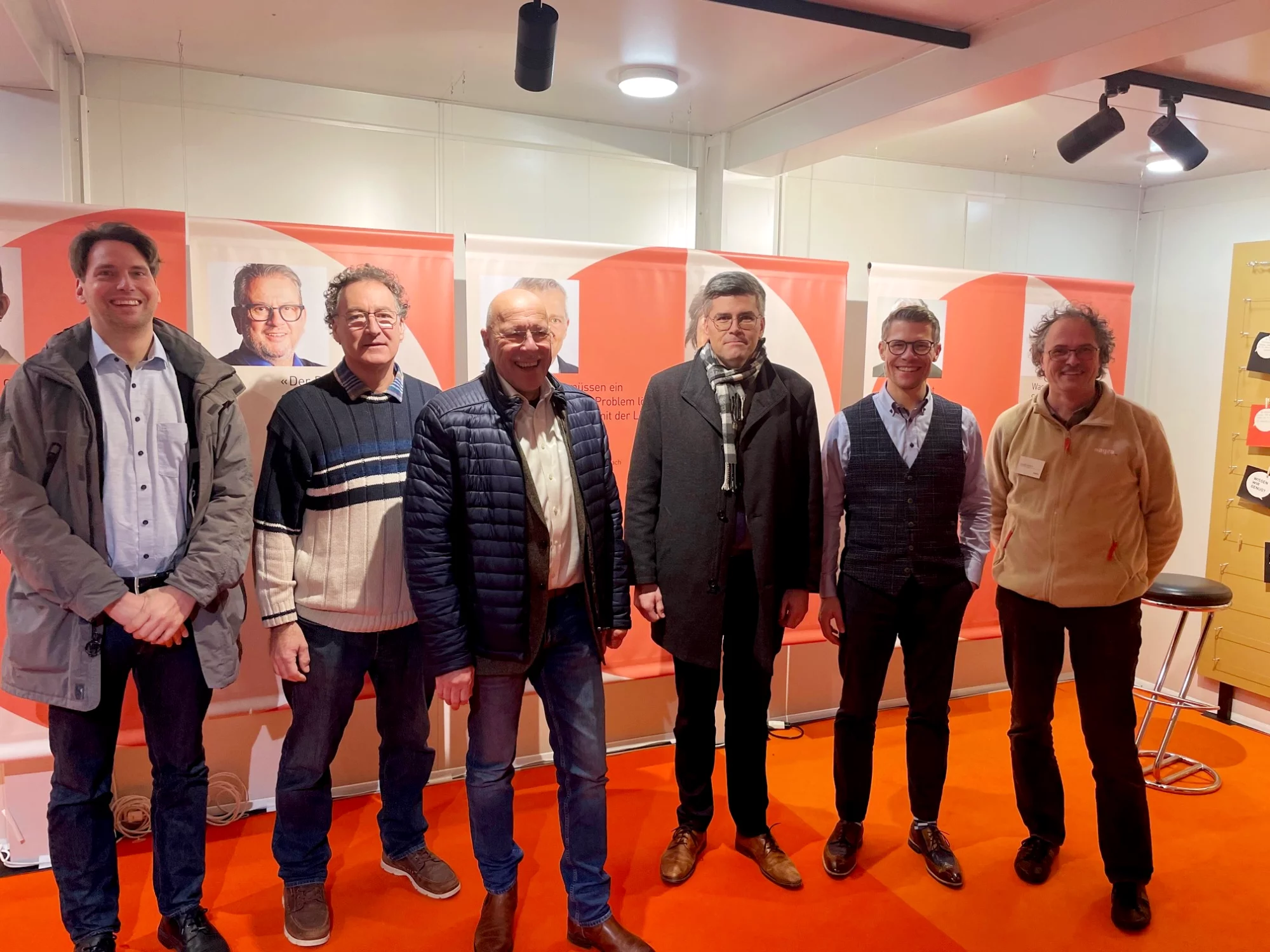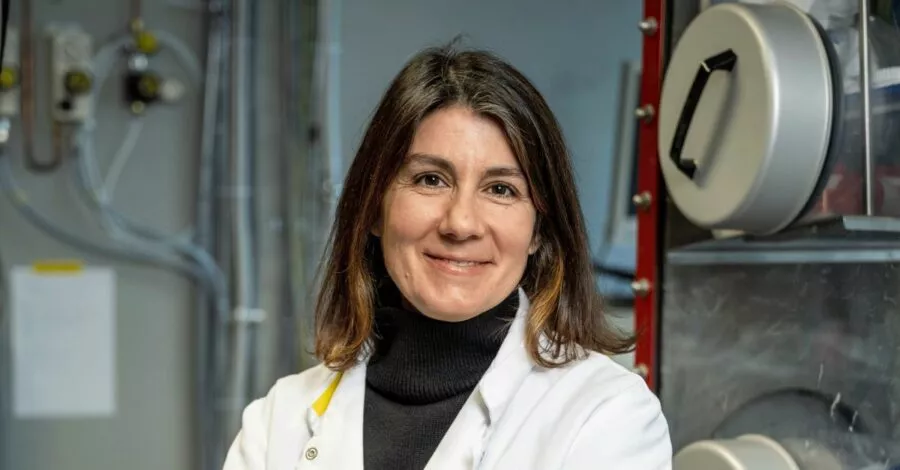
Where do you start to feel affected by a decision, and where is that no longer the case? This invisible line does not always run along political boundaries. In the case of the Swiss deep geological repository to be constructed in Nördlich Lägern, the impact is felt beyond the Rhine River, which forms the border between Switzerland and Germany in this region.
A close exchange between the two countries is indispensable. This is possible for example, at the regional conference, which offers a venue for discussion. There are also bodies such as the “German Expert Group on Swiss Repositories” (Expertengruppe-Schweizer-Tiefenlager, ESchT) and the “German Coordination Office for Deep Geological Repositories in Switzerland” (Deutsche Koordinationsstelle Schweizer Tiefenlager, DKST). Martin Steinebrunner has been Director of the DKST since 2016. Recently, he returned to Windlach for another visit to Nagra’s information pavilion.
“We weren’t expecting this”
Steinebrunner visited the information pavilion for the first time in autumn 2022 and was impressed: “First of all, by the model. And then by all the questions visitors ask here.” He particularly likes the question ‘Are we allowed to do this?’. “This isn’t some marketing stunt, this is a real concern for the people who live here. We weren’t expecting this from an organisation like Nagra.”
Nagra already used models and visualisations before announcing the siting proposal. “But they were always generic in nature. You never knew what it would really look like in the selected region.” The model in Windlach makes the repository “tangible and understandable” for the first time. This adds a new dimension to the project,
which motivated Steinebrunner to pay another visit to the information pavilion with his own delegation.

“This is a task that deserves respect”
“The emotions were palpable,” Steinebrunner recalls, thinking back to an information event in Hohentengen in the autumn, shortly after the siting proposal. People are only becoming interested now that the project has become more concrete. Those who have already been directly involved forget this quickly: “I have been participating in this project for eight years. When you are familiar with the issue, you automatically assume that others are equally involved.” This assumption simply cannot be taken for granted.
What those involved also know: safety has the highest priority. This is difficult to explain to someone who hears about a deep geological repository for the first time. “Safety is not just suddenly a given,” says Steinebrunner, trying to explain an outsider’s perspective. But this was exactly the impression that some people had. “Ensuring safety requires daily commitment. This is a task that deserves respect.” It is precisely with this respect that one must also address unresolved issues, listen to people and provide information. What could a cross-border exchange look like in concrete terms? “First of all: don’t try to influence anyone’s opinions,” warns the DKST Director. “And you must be open about what people can expect.” Doing so can occasionally require in-depth discussions. “Not everyone might be able to understand the technical details. But it is important to show that this is not a trivial task.”
Lukas Oesch, Head of Public Affairs at Nagra, would also like to expand the cross-border exchange: “People might live on the other side of the Rhine but they still belong to the region.” This has not yet been demonstrated enough to those people who have not yet heard of the regional conference or the DKST. Oesch is therefore glad that the announcement of the siting proposal last autumn has made the project more tangible: “The project has become more concrete and we no longer have to use the subjunctive when we talk about it – that is helpful.”
“A little distrust is a good thing”
The important thing now, Steinebrunner believes, is to show presence in the region. “In smaller groups so that people have the opportunity to ask their questions”. The event in Hohentengen showed that there are many questions. However, they could not all be answered in one evening. This is why he suggests that the repository model from the information pavilion find its way to Hohentengen. Lukas Oesch welcomes this proposal: “This is a good idea, and I have already brought it up at Nagra. If it brings us a little closer to the people who are interested in the project, then it is well worth it.”
Further efforts are already underway: “Our open days at the Mont Terri Rock Laboratory offer an exciting experience. Unfortunately, we have only had a few visitors from Germany so far. We are trying to change this. Everyone should have the same opportunity to join in the discussion and ask questions.”
Answering all unresolved questions is an “ongoing task. We often find ourselves repeating the same story – but that is a necessary part of our work,” says Martin Steinebrunner. Visitors should emerge with a healthy mix of trust and distrust. “A little distrust is a good thing. It is key to staying critical enough.”
Similar articles
What does Switzerland think about the deep geological repository?
Switzerland is confident that it can realise the project of the century of deep geological disposal. A recent, representative survey shows that acceptance is high across the whole of Switzerland and in the affected region.



